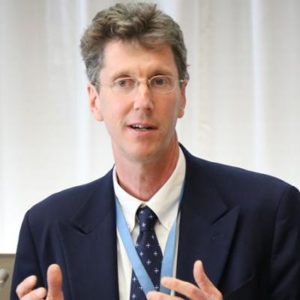Event Virtual
Building Forward Better: Prospects for Green Recovery Efforts

Supporting green deal strategies is instrumental in national and global recovery plans for the future of our planet, especially with the economic fallout from the COVID-19 pandemic.
About this Session
As attention turns to managing the economic fallout from COVID-19 and the roots of this pandemic to avoid future crises, national and global recovery plans will be instrumental for the future of our planet, especially in support to the green deal strategies announced by various Member States.
The recovery will bring diverse opportunities to accelerate the transition to a greener and more sustainable future. The European Green Deal, presented in December 2019 to achieve climate neutrality by 2050, is at the core of the European Union recovery plan from the COVID-19 pandemic. Korea took the COVID-19 crisis as an opportunity to invest in green and digital technology with its Green New Deal launched as part of the Korea New Deal in April 2020.
The Partnership for Action on Green Economy (PAGE) is an important tool in assisting its partners as they navigate the recovery, promoting inclusive green economy plans that will create jobs and prosperity for all while reducing pressures on the planet.
This event was convened by PAGE under the framework of the Geneva Environment Network.
Speakers

Steven STONE
Head, Resources and Markets Branch, UNEP

Victor VAN VUUREN
Director, Enterprises Department, ILO

H.E. Amb. Hyoeun Jenny KIM
Deputy Director-General, Global Green Growth Institute

Thibaut PORTEVIN
Green Economy Policy Officer, Directorate-General for International Cooperation and Development, European Commission

Angus MACKAY
Head, Division for the Planet, UNITAR

Sonia PEÑA-MORENO
Coordinator, Global Biodiversity Policy and Governance, IUCN

Asad NAQVI
Head, PAGE Secretariat
Summary
Welcome and Introduction
Steven STONE, Head, Resources and Markets Branch, UNEP
We all share a destiny for how we recover from the pandemic, which has now caused more than 1.6 millions deaths worldwide. Many of us have been locked down, over hundreds of millions people have lost their jobs, global GDP is predicted to shrink by 4-5% over the year, with some countries facing a GDP pull-back of over 30% quarter-on-quarter. These impacts will last over generations. The decisions that we take over the next few months and years will shape the trajectory of our future.
There are rays of hope amid the bleakness. Last weekend was Paris+5, where many countries committed to carbon-neutrality pathways in the near or distant future. Adding to those countries who have pledged carbon-neutrality by 2050 or 2060 such as China, Korean and Japan, additional countries came forward such as Argentina, Pakistan, the UK and the EU to strengthen their commitment. All this helps aligning the recovery and the stimulus packages, the trillions of dollars that are being injected into economies to make them more fit for the future that we need.
A Green Recovery With More and Better Jobs
Victor VAN VUUREN, Director, Enterprises Department, ILO
Looking at the pandemic from the job perspective, the ILO has estimated this last quarter of this year that the equivalent of 500 millions jobs are going to be lost. Over 400 enterprises worldwide have been exposed to the risk of severe disruption in the hardest hit sectors. 270 millions workers are finding themselves in extreme poverty. From a gender perspective, 40% of employed women are working in hard-hit sectors. But even before the COVID pandemic, there was a huge social deficit.
To deal with all these issues, including the environmental challenges, we should avoid the silo approach. We need to look at people, society, environment and economy in an intertwined manner. As we work with governments, we need to ensure an integrated approach at the national level. Only then will we be starting to make a dent in these challenges.
A recover from COVID-19 must be a better and greener recovery, one that ensures a just transition leaving no one behind. It is essential that this doesn’t remain a slogan. Solid research and analysis have demonstrated that investments in key green sectors often have a larger multiplier for the economy and society and create more jobs and income than conventional investment. Typical examples include sustainable infrastructure, sustainable buildings and retrofitting for energy efficiency, and renewable energy.
The UN Secretary General has put forward six climate positive actions: (1) invest in green jobs, (2) do not bail out polluting industries, (3) end fossil fuels subsides, (4) take climate risk into account in all finance and policy decisions, (5) work together, and lastly (6) leave no one behind. Countries around the world are moving in this direction, as illustrated by the EU and Korea. PAGE has been a central programme of support to countries in the context of the recovery.
Recovery from COVID-19 represents an unprecedented opportunity to fast track progress towards a better future. This is a huge challenge, and we need to focus on priority areas to advance step-by-step. We need leadership, long-term vision, and most of all decisiveness, particularly from governments.
Korean Green New Deal and How It Can Support a Green Recovery
H.E. Amb. Hyoeun Jenny KIM, Deputy Director-General, Global Green Growth Institute
On 15 December, Korea finalized its Low-Emission Development strategy (LED) and revised NDC. These are encouraging steps by which the Korean government reconfirmed its net-zero by 2050 commitment and set targets to reduce GHG by 24.4% based on 2017 by 2030. These new emissions reduction targets are meaningful because they represent a shift from BAU based to absolute numbers.
Even before the outbreak of the pandemic, climate change represented a huge issue for Korea, particulary in relation to air pollution. In collaboration with local NGOs, the GGGI started the Blue Sky Net-Zero 2050 Campaign. Additionally, former Secretary General Ban Ki-Moon became chair of the National Council on Climate and Air Quality, the highest organizations that provides recommendations to the President about air quality.
In July 2020, the Korean government announced the Korean New Deal, which arises from a convergence of support for introducing new pathways. While the ruling party took strong commitment in front of the general election in April, the context of the pandemic pushed the government to think about how to build back better, how to ensure resilience, and how to ensure sustainable economic growth.
The Korean New Deal is a package of investment totally 134.5 billions US dollars, lead by the government and focused on job creation. The strategy rests on two pillars that are fundamental to a post-COVID recovery: decarbonization (Green New Deal) and digitalisation (Digital New Deal). As a strong ICT country, Korea sees technology in synergy with green ambitions. Main priorities for the strategy include low-carbon and decentralized energy, building innovative ecosystem and green industry, and green transformation of infrastructure. Key sectors, such as renewable energy and mobility, are addressed to bring real change. Through the Korean Green New Deal, the government is aiming at achieving sustainable and resilient economic growth.
However, experts and civil society parts have noted that the deal, appearing as a short-term economic stimulus package, lacked clear long-term vision. Therefore, if Korea is really committed to achieve green transition, a strategy for economic transformation must be included. Thus, in October 2020, President Moon Jae-In announced Korea’s NetZero by 2050 commitment and the government rolled out a strategy for implementation.
The GGGI is closely working with the Korean government to advise on policy options to implement the Green New Deal. In addition, the GGGI help developing countries, which have been most affected by the pandemic, to design similar deals and good projects proposals. Finally, the GGI works with the Korean government to prepare the P4G summit that will be held in May to agree on actions to achieve carbon neutrality.
Green Recovery and the EU Green Deal
Thibaut PORTEVIN, Green Economy Policy Officer, Directorate-General for International Cooperation and Development, European Commission
The European Green Deal, adopted a year ago, is a blueprint for recovery. The implementation of the strategy has continuously driven the EU’s response to the pandemic. Many initiatives have been adopted since last year in the areas of energy, circular economy and industry, climate change, biodiversity, and food systems. The European Green Deal also has an important external dimension. Trade relations and agreements, diplomacy, and international cooperation are harnessed as tools to promote the green deal approach.
As a new budget cycle starts in the EU (2021-2017), a lot of resources will be contribute to the recovery. Additionally, a new recovery instruments, Next Generation EU, has been put in place funded with resources from the market. Aside from supporting environmental and climate objectives, the Green Deal is primarily defined as a new growth strategy for the EU in which sustainability contribute to competitiveness. Prioritized areas for investments include buildings, energy efficiency, and transport, as these sectors deliver more jobs. The EU has also committed to 37% expenditure on climate and set various targets in line with environmental objectives.
Furthermore, the EU has undertaken actions to support recovery at the global level. These include short-term elements for humanitarian needs, support to health systems, and addressing the economic and social consequences of the pandemic. This is where most EU resources for the recovery have been made available, and where there is the greater scope for promoting green recovery. In this regard, the EU has launched several initiatives and participated in dialogues to promote EU’s approach to green recovery.
Finally, the EU promotes green recovery horizontal through its instruments, but we see few initiatives that focus directly on advocating green recovery at the global level. We are very pleased to see PAGE showing so much leadership in this area.
Learning for a Green Recovery
Angus MACKAY, Head, Division for the Planet, UNITAR
The work of UNITAR can inform about a few issues in terms of how we scale up our skills. First, we have a very narrow base of knowledge about what green economy means in practices. Indeed, the skills that are necessary for countries to be able to engage in these trends nationally and internationally comes from a very narrow base. An example is how we measure a green economy and what kind of indicators can be used to measure progress and report back to the public.
Secondly, the silo mentality that Victor has already mentioned remains a key challenge. When engaging at the national level, we are often faced with this mention, but by definition, a green economy cannot be siloed. We need to bring different worlds together in order to create the innovations that we need.
A third challenge related to complexity, as economy should not only be green can be Many are discussing the blue economy to reflect the importance of water, particularly in developing countries. More recently, we also refer to the purple economy, which highlights the need for care systems to be sustained.
Scaling up knowledge and practical skills is what’s needed, but the journey has started and PAGE is contributing. However, it cannot be the old model of a few wise organizations telling everybody else how it should be. We need to engage learning institutions and the entire education system around the world, which is why PAGE is supporting the establishment of the Green Learning Network.
PAGE is also providing a package of courses encompassing introductory knowledge on what a green economy is and why it’s important, as well as more specific inputs on industry, indicators, trade and finance. Finally, PAGE has launched a year-long podcast series called ‘The Green Rennaissance’ (available on Spotify or SoundCloud) in order to build awareness.
To borrow words from leading economist Elliott Harris, we should be more hopeful of green economy today than back in 2008 when these questions were raised before, because the world structure is different. The cost-effectiveness of green solutions, the engagement of enlightened corporations and CEOs, as well as youth engagement are aspects which bring us hope.
Nature-based Solutions for a Green Economic Recovery
Sonia PEÑA-MORENO, Coordinator, Global Biodiversity Policy and Governance, IUCN
In face of the pandemic, the IUCN has launched a new initiative to ensure that -based solutions are integrated in recovery plans. As the Secretary General pointed out, recovery from the pandemic and repairing the planet are two sides of the same coin. The pandemic has forced us to rethink the status quo and has opened the door for sustained investments in nature to be part of the recovery.
We know that, when applied properly, nature-based solutions, can create positive, sustainable and inclusive change. It is clear that investing in nature is beneficial for creating jobs, reducing vulnerability and increasing community resilience, tackling biodiversity and climate change, and constituting a basis for achieving the Sustainable Development Goals. We need to make the figures which are backing these claims better known and available.
Strong measures to cushion the impacts of the pandemic are already being taken with around 13 trillion globally according to the IMF. Governments and investors need the knowledge and support that we can provide to go in the right direction. IUCN’s ambition is to ensure that post-COVID investments do not harm nature and livelihoods, and that at least 10 per cent of overall recovery investment is directed to and provides value to nature.
The Nature-Based Recovery works toward these objectives in three areas: (1) furthering the knowledge on nature-based solutions and recovery as well as indicators, (2) assessing the financial investment comprised in recovery packages, and (3) engaging with IUCN Members and partners. IUCN is uniquely positioned to tackle on these ambitions thanks to its worldwide network and expertise.
We must build on the momentum that is being created. This year was supposed to be the year of biodiversity, which has been postponed to next year. We must use that catalyzing moment to ensure the recovery is based on nature. The IUCN World Conservation Congress, which will take place on 3-11 September 2021 in Marseille, France, will be a tremendous opportunity to keep working in this direction.
Finally, I would like to address the question on the relation between debt and nature-based solutions. It is clear that reducing debt is an important issue for developing countries, but debt forgiveness will not provide the answer. Countries need income, jobs and tax revenue to find a way out of the economic trouble. Nature-based solutions are interesting in that regard. We must challenge the assumption that green investment is a luxury which comes after all other development needs are met. Rather, green investments are less expensive than traditional approaches for economic growth and can provide more easily reachable jobs.
PAGE Supporting Green Recovery
Asad NAQVI, Head, PAGE Secretariat
Policy and investment decisions taken today in response to COVID-19 will be decisive to whether future risks will be eliminated or amplified. This is something that the Management Board of PAGE has been putting forward from early on, and it is still very valid today. A second useful step that PAGE has taken was to inform the UN’s corporate response so that it is green and inclusive. PAGE was mentioned as probably the only partnership of the UN that will support on green stimulus packages. It led to guidance to all country teams on economic transformation which calls for building the ecological foundations of the economy.
Another issue related to our country partners’ need for tools that do not only tackle environmental sustainability but serve creating jobs and growth. Therefore, PAGE has come forward with green economy assessment tools that governments can use to see which options are best for greening the economy in their specific context. PAGE also provided global data to partner countries which showed the impact of COVID on key green economy indicator and how to tackle them in a green and inclusive way.
Responding to the need of global modelling, we created a model to compare the impacts of business-as-usual recovery versus green recovery. We drew policy lessons from the 2008 experience, taking into account that the context has changed. This also aims at informing global policy makers that this crisis is an also opportunity. At the High-Level Political Forum, we brought four Ministers together and Korea has recently joined an agreement with PAGE on green recovery.
As the issue of financing the recovery is also critical, we realigned our capacity building, especially on sustainable finance. That module has been launched and is on bigger demand at the moment.
However, PAGE only cannot deliver this, and bringing the UN system together at the country level is crucial. Therefore, we work very closely with the UN system, through the UN Resident Coordinator Offices in the countries. We also created new partnership, with Cambridge Econometrics, the SEED programme, the NDC Partnership and more. PAGE is directly supported 20 countries, but with the help of its partners it can reach further. We hope we will be able to take it to the regional and global level through our partnerships, for example with GO4SDGs.
Measuring progress is a key element that we are now seeing countries move toward with increasing numbers of announcements for greening the recovery. We are now realigning our Green Economy Measurement Framework and we will offer this tool to countries. Finally, we need to continuously review and refine our approach. As we see the pandemic being prolonged and the impacts worsening, we need to refine our methodologies, tools and partnerships to move forward.
Q&A
Juli Benda (UNCTAD): Are there any plans to enshrine Korea NetZero by 2050 commitment into law?
H.E. Amb. Hyoeun Jenny Kim: Although it has not been incorporated yet, the Korean National Assembly is aware that their support is essential for effective implementation and some action should follow on this side. Meanwhile, the 2030 targets set in the revised NDC will be incorporated into Korean Law.
Akiko Hiratsuka (UNRISD): Within the Green New Deal, will there be a supporting scheme for workers and communities that might be negatively affected by green industries, such as those working in the fossil fuel-based industries?
H.E. Amb. Hyoeun Jenny Kim: The Korea New Deal also includes policies to strengthen social satefy nets. The government will provide proper support for people who will be negatively affected by green policies, such as workers in fossiel-fuel centered industries.
Elise Buckle (Climate & Sustainability): The European Green New Deal looks excellent on climate, energy, transport, education and IT. But what about biodiversity?
Thibaut Portevin: Biodiversity is featured prominently in the European Gren Deal in various pillars, such as climate change or food systems. While biodiversity is not referred to explicitly in the regulation, the commitment to a green transition is a very clear. In addition, the Commission has produced some guidelines to support the development of Member States’ recovery plans, which explicitly refer to biodiversity, including restoring ecosystems and investing in nature-based solutions.
Steven Stone: What about the Farm to Fork initiative embedded in the Green Deal?
Thibaut Portevin: Indeed, the EU is also promoting the Farm to Fork approach in the context of international cooperation, which is one of the main tools to support biodiversity.
Selby Zuma (Ecology Africa Foundation): It is true that Africa is always left behind. How do we partner with your organisation to bridge the divide?
Angus Mackay: The pandemic has indeed exacerbated already existing socio-economic issues. In terms of effective transfer of new knowledge, we should be technology agnostic, meaning we shouldn’t assume that e-learning for instance will be the best solution in all contexts. We are acutely aware of the digital divide and we are experimenting with alternatives, such as podcasts and support to national radio stations.
Juli Benda (UNCTAD): Trade is expected to play a crucial role in the economic recovery from the pandemic. Is there scope for trade – and in particular sustainable trade – in biodiversity-based products to play a role in a nature-based recovery too?
Sonia Peña-Moreno: Trade will be play a crucial role in recovery, and thus it will also be crucial to street it in the right direction. Bringing expertise on sustainable trade practices will be essential in order to bring nature-based solutions into the recovery.
Fulvia Farinelli (UN OCR Argentina): Why isn’t IUCN operating in Latin American countries? Nature-based solutions are much needed there as well, where several countries are caught in the middle-income trap and overburdened by debt.
Sonia Peña-Moreno: IUCN operates in Latin America. We have two Regional Offices, One in Quito that covers South America and another one in Costa Rica that covers Mesoamerica and the Caribbean. We actively work with our Members across the regions in nature-based solutions.
Pascal Delisle (EU Mission): How do you see the interplay between targeted and sectoral investments in the context of recovery plans and more structural reforms such as on sustainable finance which should – when operational- channel investments in the right sectors?
Azad Naqvi: Partnerships like PAGE can here play a bigger role. For shifting toward green and inclusive economy, it is important all sectors move in that direction. Therefore, PAGE has focused on macroeconomic policy reforms which create an overall enabling environment which doesn’t benefit one particular sector but all sectors. It is not the environmental policy that will create a shift, rather combining the employment policy, the economic growth policy, the financial sector regulators and the enterprise and industrial policy.
Steven: In addition to the initial packages that are being rolled out, how do you see the follow-on reforms to make that money really useful in the longer term?
Azad Naqvi: The current amount allocated to recovery is far more than we need for achieving the Sustainable Development Goals. Therefore, it will be decisive whether this money moves in the right direction. However, while there are trillions of dollars allocated, only 2 per cent of it is moving between borders. This means countries with more resources will recover faster and greener, deepening the existing gap between have and have-not. The right use of stimulus packages that are green and inclusive is important, as well as policies that ensure the follow-up investments and financial flows both from public and private sectors reinforce what is being created through their green recovery packages.
Pradeep Eapen Mathew (Oil and Natural Gas Corporation): What are you views on the challenging aspects that the impacts of COVID-19 will create on the economies of developing nations, especially those in Africa and Asia?
Victor Van Vuuren: In developing nations, the economic hardships are often way bigger than the health crisis. Therefore, governments had to turn to stimulus packages to keep jobs and enterprises functioning, while taking a focus off the environment. They now need to build back better and greener. But in order to attract the foreign direct investment, which is essential for Asia and Africa, as there is not sufficient at the local level to stimulate the economic recovery, they have to adopt a holistic approach. Countries need to work together and come up with strategies as sub-regions that would place them on the economic growth path that would attract investment. Investors as looking for a package that cuts across people, societies, the economy and the environment. Thus, countries that can come up with holistic plans will manage to attract more foreign direct investment. At the national level, we need to look at the involvement of, not only governments, but also the private sector and the social partners on the workers’ side. There is a collective leadership and process to be dealt with, but national policy coherence, national strategy, regional collaboration is a recipe to start getting the much need investments to deal with these issues, including the environment.
Conclusion
Going beyond slogans and capturing our thoughts going forward better and greener is essential. We have mentioned the structural changes between the last time that we got hit with a recession and financial crisis in 2008 and the current situation with the lockdown. The private sector and finance sector are awake, while youth and governments are mobilized. Today’s take-away point is our ability to innovate in the face of necessity, to learn from the past and be creative about our way forward.
Video
The event was live on Facebook.
